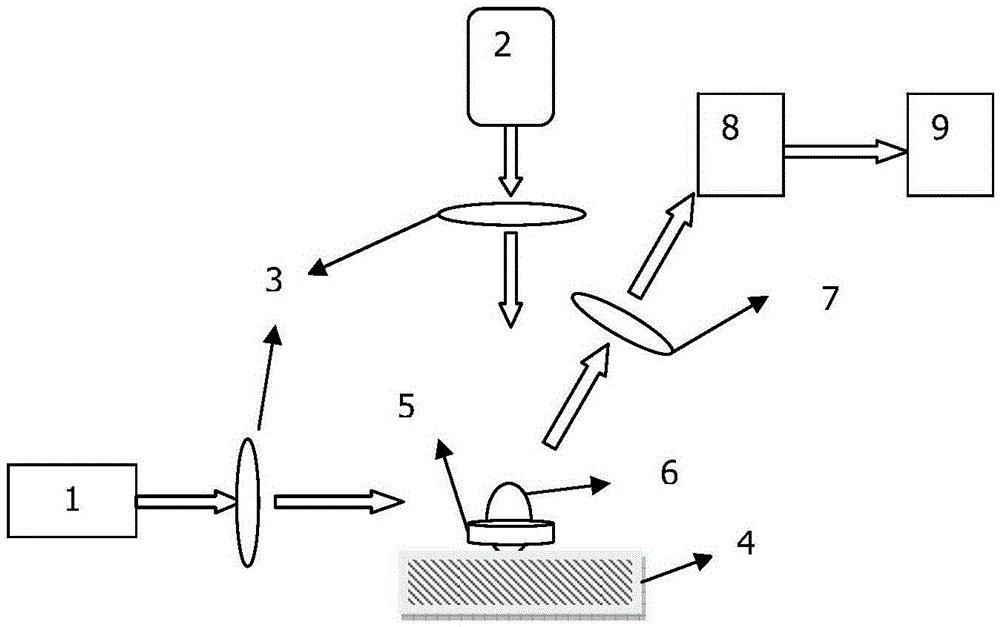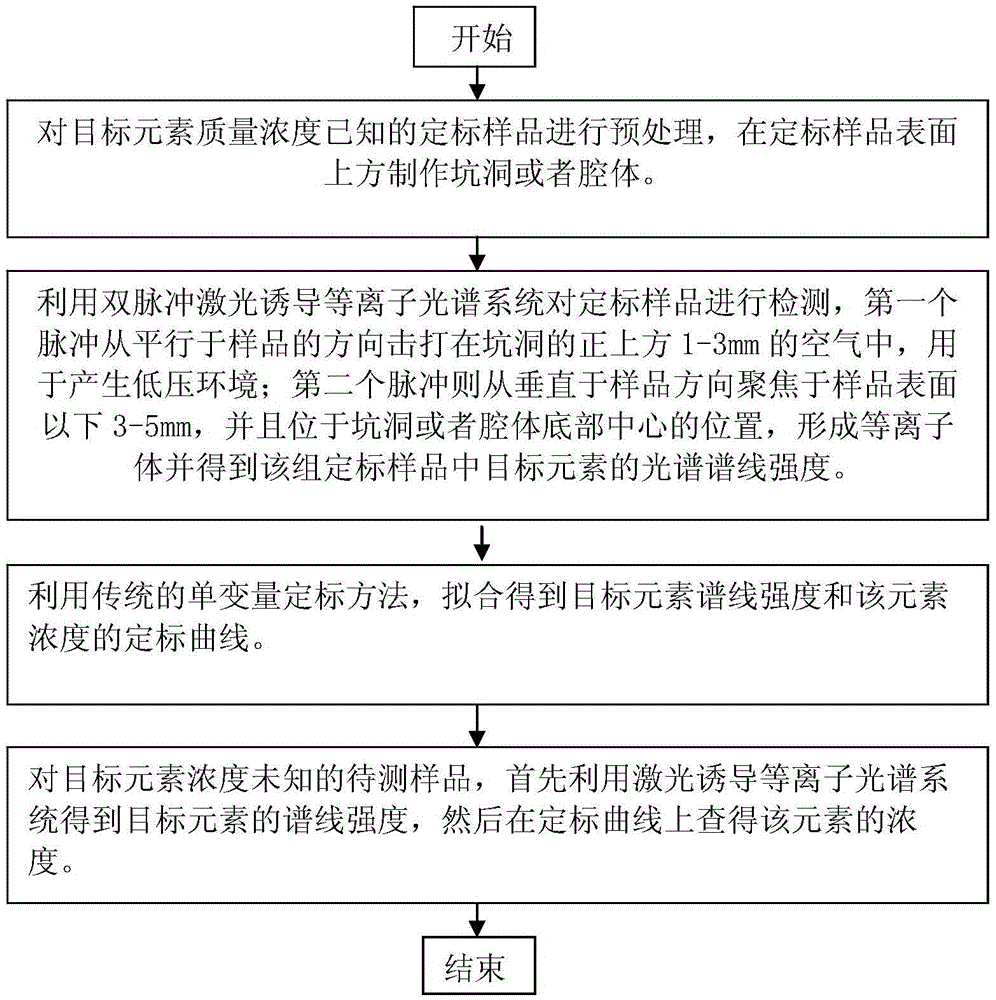A Method for Improving the Measurement Accuracy of Elements Based on Double Pulse and Spatial Confinement
A space-limited, double-pulse technology, applied in the field of atomic emission spectrometry, can solve the problems that the measurement accuracy cannot be guaranteed, the LIBS repeatability is low, and the application of LIBS is limited. The effect of lowering the detection limit
- Summary
- Abstract
- Description
- Claims
- Application Information
AI Technical Summary
Problems solved by technology
Method used
Image
Examples
Embodiment
[0026] Taking the measurement of carbon elements in coal by LIBS as an example, the method of improving the measurement accuracy of elements by using plasma space confinement is described.
[0027] 1) First, ten standard coal samples with known mass concentrations of each element were used for analysis. The mass concentrations of the main elements of each coal sample are shown in Table 1:
[0028] Table 1. Composition of standard coal samples
[0029]
[0030]
[0031] 2) Detection by laser-induced plasma spectroscopy system: use two pulsed lasers as excitation light sources, the position of the first pulsed laser 1 is on the same plane as the surface of the calibration sample, and the position of the second pulsed laser 2 is perpendicular to the surface of the calibration sample ; The laser emitted from the first pulse laser is focused by the focusing lens 3 along the direction parallel to the sample surface, and then acts on the pit made in step 1) or the air at 1-3 mm...
PUM
 Login to View More
Login to View More Abstract
Description
Claims
Application Information
 Login to View More
Login to View More - R&D
- Intellectual Property
- Life Sciences
- Materials
- Tech Scout
- Unparalleled Data Quality
- Higher Quality Content
- 60% Fewer Hallucinations
Browse by: Latest US Patents, China's latest patents, Technical Efficacy Thesaurus, Application Domain, Technology Topic, Popular Technical Reports.
© 2025 PatSnap. All rights reserved.Legal|Privacy policy|Modern Slavery Act Transparency Statement|Sitemap|About US| Contact US: help@patsnap.com



